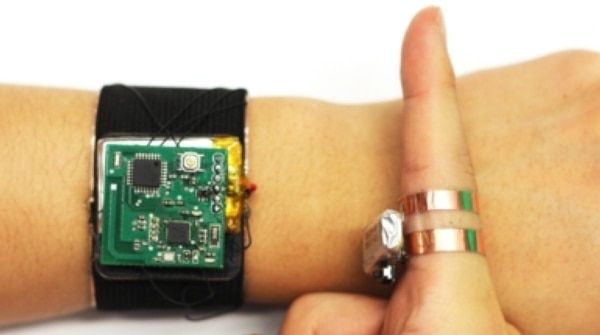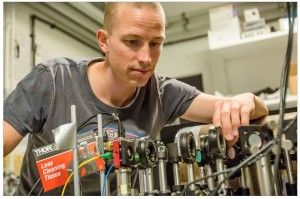Researchers in growing numbers are starting to enlist do-it-yourself 3D printers, cheap electronics, sensors and more to advance their work




Imagine a powerful sensor that can sit inside your body, reading and transmitting information to help keep you healthy.

Verily and GlaxoSmithKline have partnered to form Galvani Bioelectronics, a new company which will focus on the research, development, and commercialization of bioelectronics. One of the first projects will be to develop a precision device that can fix type 2 diabetes.
Verily, formerly known as Google Life Sciences, is partnering with GlaxoSmithKline (GSK) to develop bioelectronic medicines that can “harness electrical signals in the body to treat chronic disease.”
The collaboration marries GSK’s pharmaceutical expertise with Verily’s prowess in developing tiny low power electronics. The unification will result in a new company called Galvani Bioelectronics, after Italian scientist Luigi Aloisio Galvani who was an early pioneer of bioelectricity.


Facebook said from the start that it would open source its Surround 360 camera this summer, and it’s following through on that promise. You can now visit GitHub to learn how to build the camera, install its software and (naturally) tweak both the hardware and software to meet your needs. Just keep in mind that this isn’t exactly a homebrew project — you’ll need about $30,000 in parts to build the official version. It’s more for video pros that want to produce 360-degree content without having to turn to pricier, pre-packaged offerings like Nokia’s Ozo. Still, it’s worth exploring the source if you want to either see how Facebook’s VR cam works or design a lower-cost alternative.

Some folks will be freaked out by this while others will luv it.
A visitor tries out an HP Spectre XT laptop computer featuring an Intel Ultrabook processor at the Internationale Funkausstellung (IFA) 2012 consumer electronics trade fair on August 31, 2012 in Berlin, Germany. (Getty Images — Representational Image)

More information on DARPA’s efforts in build new interface standards for modular design & practical circuit blocks.
Is it possible to develop chip technology that combines the high-performance characteristics of ASICS with the speedy, low-cost features of printed circuit boards?
Scientists at the Defense Advanced Research Projects Agency this week said they were looking for information on how to build interface standards that would enable modular design and practical circuit blocks that could be reused to greatly shorten electronics development time and cost.
+More on Network World: DARPA: Researchers develop chip part that could double wireless frequency capacity +
One technique for addressing rising cost and complexity has been the use of a modular design flow that subdivides a system into functional circuit blocks, called IP blocks, DARPA stated. “IP block refers to intellectual property captured in a pre-designed functional circuit block. Examples of IP blocks include, but are not limited to, timing circuits, filters, waveform generators, embedded processors, data converters, amplifiers, fast Fourier transforms, serializer-deserializers and memory,” the agency stated.
